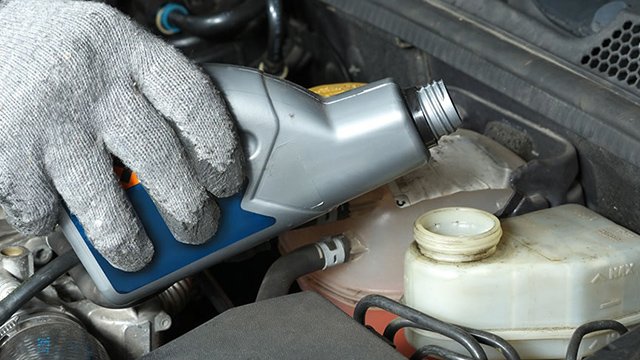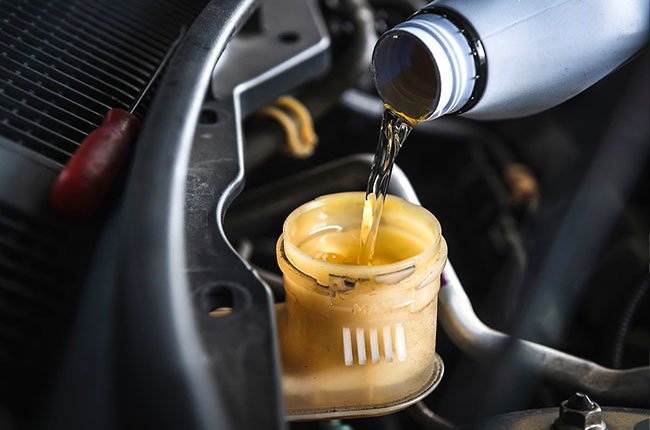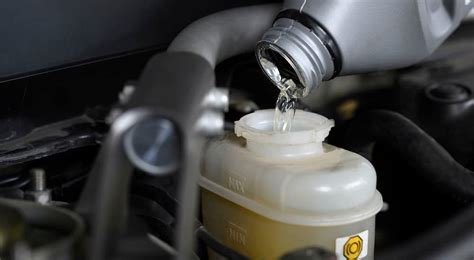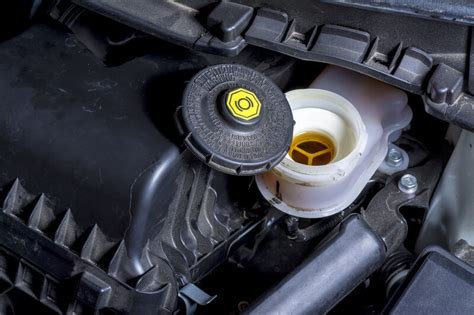Learn about brake fluid—how to check levels, solve problems, and choose the right type. Find tips on maintenance and replacement to ensure vehicle safety.
Brake fluid is very important for your car’s brakes. It helps make your brakes work well when you press the pedal. You need to know how to check and keep your brake fluid right. Sometimes, brake fluid leaks or gets dirty, and you need to fix that. In this article, you will learn how to check brake fluid, when to replace it, and how to solve common problems. We’ll also talk about choosing the best brake fluid for your car and if you should do it yourself or get a professional. Let’s get started!
What is Brake Fluid and Why is it Important?
Brake Fluid is a crucial component of your vehicle’s braking system. It is a special hydraulic fluid that transfers the force from your brake pedal to the brake components at the wheels. Without brake fluid, your vehicle’s braking system cannot function effectively, which can lead to decreased braking performance and increased risk of accidents.

Definition and Purpose
Brake Fluid serves as a hydraulic medium that helps in converting the force applied on the brake pedal into pressure that acts on the brake pads. This fluid is essential for the operation of disc and drum brakes, ensuring that the vehicle stops safely and efficiently.
Types of Brake Fluid
There are several types of brake fluid, each suited for different types of braking systems:
- DOT 3: A glycol-based fluid commonly used in older vehicles.
- DOT 4: Offers higher performance and is used in newer vehicles.
- DOT 5: Silicone-based, designed for vehicles that require a non-hygroscopic fluid.
Ensure you use the type recommended by your vehicle manufacturer to maintain optimal performance and safety.
How to Check and Maintain Brake Fluid Levels
Keeping an eye on your brake fluid level is vital for maintaining your vehicle’s braking performance.

Checking Brake Fluid Levels
To check the brake fluid level, follow these steps:
- Locate the brake fluid reservoir under the hood.
- Clean the area around the reservoir to prevent dirt from entering.
- Open the reservoir cap and check the fluid level against the “full” line.
Regularly checking the brake fluid level helps ensure that your braking system operates correctly.
Top-Up vs. Replacement
Sometimes, you might need to top up the brake fluid. This is typically necessary if the level is low but the fluid is in good condition. However, if the fluid appears dirty or contaminated, it’s time for a replacement.
Common Problems with Brake Fluid and How to Solve Them
Brake fluid issues can impact your vehicle’s performance. Here are some common problems and their solutions:
Brake Fluid Leaks
Leaks can lead to a drop in brake fluid levels and reduced braking efficiency. To address leaks:
- Inspect the brake lines and connections.
- Replace any damaged components or seals.
Moisture Contamination

Brake fluid is hygroscopic, meaning it absorbs moisture over time. This can lead to reduced braking performance and corrosion. If you suspect moisture contamination:
- Check the fluid’s appearance; it should be clear to amber.
- Replace the brake fluid if it appears cloudy or discolored.
How Often Should Brake Fluid Be Replaced?
Recommended Replacement Intervals
Most manufacturers recommend replacing brake fluid every two years or 24,000 miles. This ensures that the fluid remains effective and your braking system operates safely.
Signs That It’s Time for a Change
Look out for the following signs:
- Spongy or soft brake pedal
- Brake warning light on the dashboard
- Reduced braking performance
If you notice any of these signs, it’s crucial to replace the brake fluid promptly.
The Impact of Brake Fluid Quality on Vehicle Performance
High-Performance Brake Fluids
Using high-quality brake fluid can enhance your vehicle’s braking performance. These fluids have higher boiling points and better resistance to moisture, which improves overall safety and efficiency.

Effects of Poor-Quality Brake Fluid
Poor-quality brake fluid can lead to:
- Reduced braking efficiency
- Increased risk of brake failure
- Corrosion of brake components
Ensure you use a reputable brand that meets your vehicle’s specifications.
How to Choose the Right Brake Fluid for Your Vehicle
Factors to Consider
When choosing brake fluid, consider:
- Vehicle manufacturer specifications
- Driving conditions (e.g., extreme temperatures)
Brands and Products to Consider
Some well-regarded brake fluid brands include:
- Bosch
- Castrol
- Prestone
Check product reviews and select a fluid that aligns with your vehicle’s needs.
DIY vs. Professional Brake Fluid Service
Performing Brake Fluid Maintenance Yourself
If you choose to perform brake fluid maintenance yourself:
- Gather necessary tools like a brake fluid tester and wrench.
- Follow manufacturer guidelines for fluid replacement.
When to Seek Professional Help
For complex issues or if you’re unsure about the process, seeking professional help is advisable. Professionals can ensure that the brake fluid service is done correctly and that any underlying issues are addressed.

Environmental and Safety Considerations
Safe Handling and Disposal
When handling brake fluid:
- Wear gloves and safety glasses.
- Dispose of old brake fluid at a certified recycling center.
Environmental Impact
Brake fluid can be harmful to the environment if not disposed of properly. Always follow local regulations for disposal to minimize environmental impact.
Brake fluid is key for safe braking and vehicle performance. Regular checks and timely replacements ensure your brakes work efficiently. If you have questions or need help, feel free to comment below, share this article, or explore more of our content. Your vehicle’s safety is worth it!
FAQs about Brake Fluid
What is Brake Fluid and Why is it Important?
Brake fluid is a hydraulic fluid essential for the proper functioning of your vehicle’s braking system. It helps transfer the force from the brake pedal to the brake components, allowing you to stop the vehicle safely. Without sufficient and properly maintained brake fluid, your braking system could fail, leading to decreased performance and increased risk of accidents.
How Often Should Brake Fluid Be Replaced?
Typically, brake fluid should be replaced every two years or 24,000 miles, whichever comes first. This regular maintenance ensures that the fluid remains effective and free from contaminants that can degrade braking performance. However, always check your vehicle’s owner manual for specific recommendations.
How Can I Check the Brake Fluid Level?
To check the brake fluid level:
- Locate the brake fluid reservoir under the hood of your car.
- Clean the area around the reservoir to prevent dirt from entering.
- Open the cap and visually inspect the fluid level. It should be between the “minimum” and “maximum” lines on the reservoir.
If the level is low, you might need to add more brake fluid or check for leaks.
What Are the Signs That Brake Fluid Needs to Be Replaced?
Signs that brake fluid needs to be replaced include:
- Spongy or soft brake pedal: Indicates air in the brake lines or degraded fluid.
- Brake warning light: Often comes on when the brake fluid is low or contaminated.
- Reduced braking performance: If your brakes don’t feel as responsive, it could be due to old brake fluid.
Can I Use Any Brake Fluid in My Car?
No, you should use the brake fluid type specified by your vehicle manufacturer. Most vehicles use DOT 3, DOT 4, or DOT 5 brake fluids. Using the wrong type can affect braking performance and safety. Always check your owner’s manual or consult with a professional if you’re unsure.